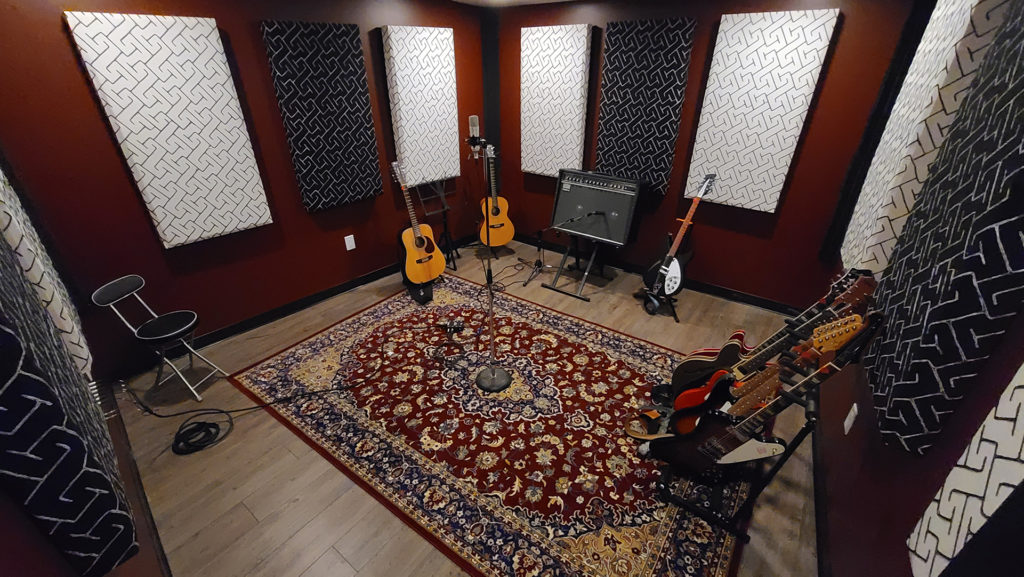
At Acoustic Fields, we have a process where we can assist you with your room issues. The process is our online room form https://www.acousticfields.com/free-room-analysis/ where you give us the critical data regarding your room. We will ask for your room dimensions, the room usage, and numerous other variables that we will need to analyze your current room. We can work with an existing room or assist you with designing a new room. If you have an existing room, you will fill out the questions regarding your room in the online form. With this room form system, you can also attach pictures of your room. The pictures are very helpful since they show us your current setup. The pictures are also important, so we can see what space you have available for treatment types. With a new room design, we will assist you with calculating room size and volume to match the chosen room usage. Noise transmission issues can also be addressed during the design process. https://www.acousticfields.com/recording-studio-design-service/ Lets take a look at some existing rooms our clients have sent in and see what things work and what does not.
In this title picture above we see a combination of what to do and what not to do. We see a room that is what we call a live room. It is a room where an individual plays an instrument within or a group of musicians play within. We can see that the room has multiple panels on each wall. This is a desired treatment approach when it comes to a live room. All walls within a small room produce low-frequency pressure issues along with middle and high reflection issues. We can see that the client recognized this requirement and placed numerous panels across each wall surface area. However, when we examine the instruments within the live room, we see that the guitars and amplifiers are full range instruments that produce energy from 40 Hz. through 20, 000 Hz. The treatment on the four walls is not designed to deal with that frequency range of energy. To treat full range energy within small rooms, you must use diaphragmatic absorption. Diaphragmatic absorption is the most powerful of all the low frequency sound absorption technologies. It is designed to deal with large amounts of low-frequency energy pressure. Diaphragmatic absorption technology ranges from 8″ – 16″ in depth and can weigh hundreds of pounds. https://www.acousticfields.com/product/carbon-panel/ This is a case where we had the correct thinking but the wrong treatment technologies.
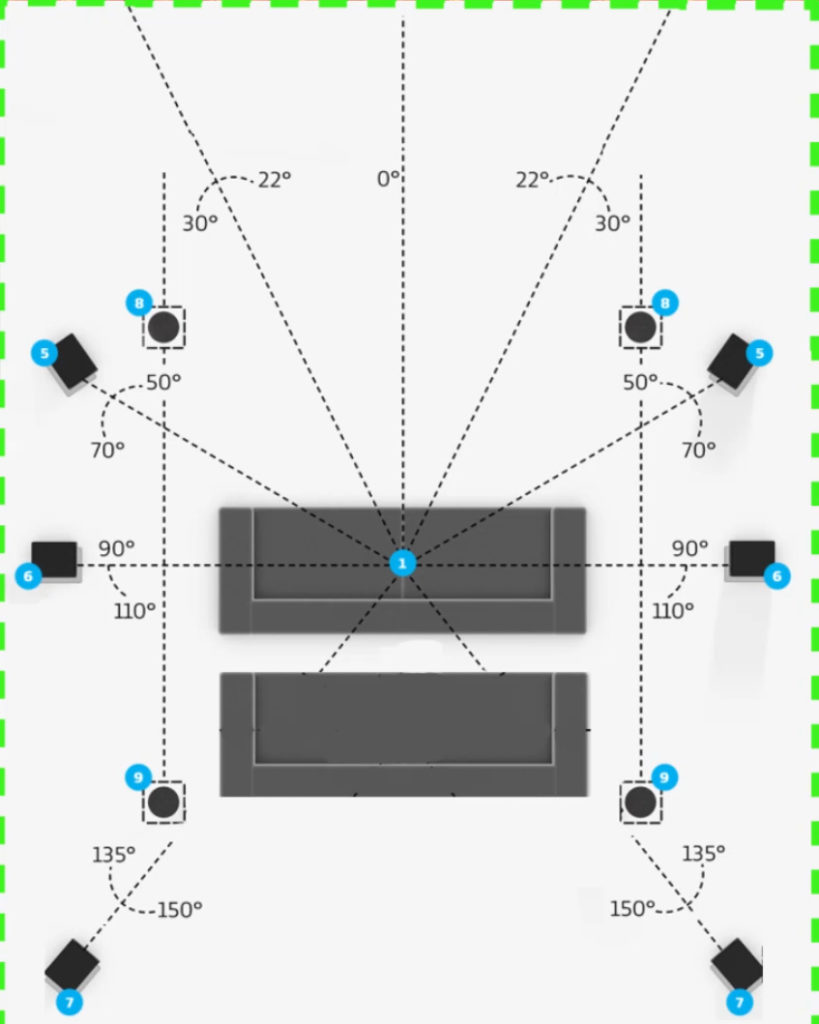
In the above graphic, we see a very important speaker / listening position regarding multiple channel setup for home theater. Most of the home theater setups we see are not set up properly. Distance from speakers to the listening.position are critical. Sound travels at a constant speed and the distance between the speaker and the listener is critical. In most setups we see the distances from the speakers or channels can vary drastically. This will produce time delays in the sound energy reaching the ears of the listener. With this setup, we see that not only are the distances equal but the angles of the speakers to the listening position are set up in the same manner that the engineer used to create the multiple channel mix. This attention to the proper distances in your setup in your home theater setup can go a long way to duplicating the experience the sound engineer designed for that particular movie. Pay attention to the distance from each speaker to the listening position and the angle of each speaker to the listening position. https://www.techradar.com/best/best-dolby-atmos-speaker-guide
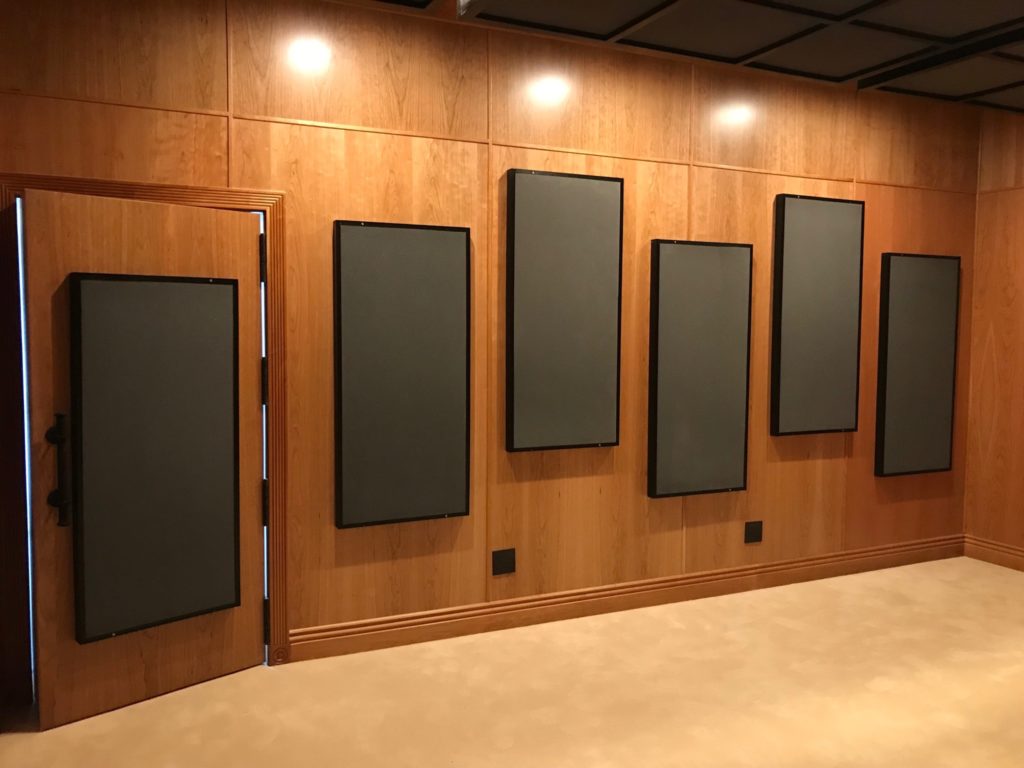
One of the most popular room wall treatments is drywall. Drywall is used because it is cheap and relatively easy to install. It has been an industry standard for years. However, it has a negative impact on our music and voice. If you measure a room with drywall and measure a room that has been treated with wood products, you see a difference in the frequency response curve from 800 Hz. – 2,000 Hz. This frequency response aberration produces what we call in the business drywall sound. You can experience this sound quality in any drywall room. Drywall has its own sound to it and it is not a favorable sound for music and voice. It works in office buildings and commercial applications but it should never be used in critical listening environments. When we design rooms or retrofit existing rooms, we install cherry plywood for the “skin” of the room. We have found that cherry wood has the best tonal qualities for middle range frequencies and avoids the “drywall sound” with all of its frequency aberrations. With cherry wood types, we experience a smooth middle range frequency response that does not have the frequency response issues associated with drywall. https://en.wikipedia.org/wiki/Drywall
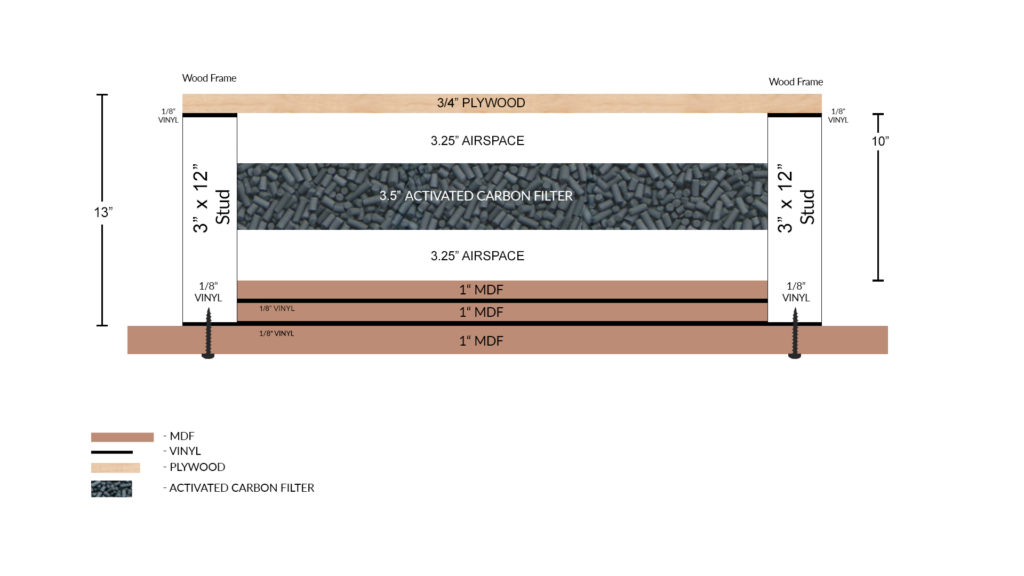
One of the most difficult energy issues to manage within small rooms is the low frequencies produced by instruments. Low-frequency energy is long and tall. A 40 Hz. kick drum can produce energy that is 14′ tall and 28′ long. In order for this energy to fit within a room, we must have room dimensions that are equal to the wavelengths we are producing within the room to minimize the room energy interaction. It is difficult to find rooms that have 28′ distances with any of the three dimensions especially the ceiling height. The bottom line here is low-frequency energy does not fit within our rooms and will produce distortion. We must absorb that excess energy with the proper rate and level of absorption. You have two options to meet this objective. We can build the low-frequency absorption into the walls or have freestanding units positioned within the room. With low-frequency management it is all about having enough square footage of coverage to manage the frequency and amplitude of the unwanted low-frequency pressure. https://www.acousticfields.com/carbon-absorber-wall/


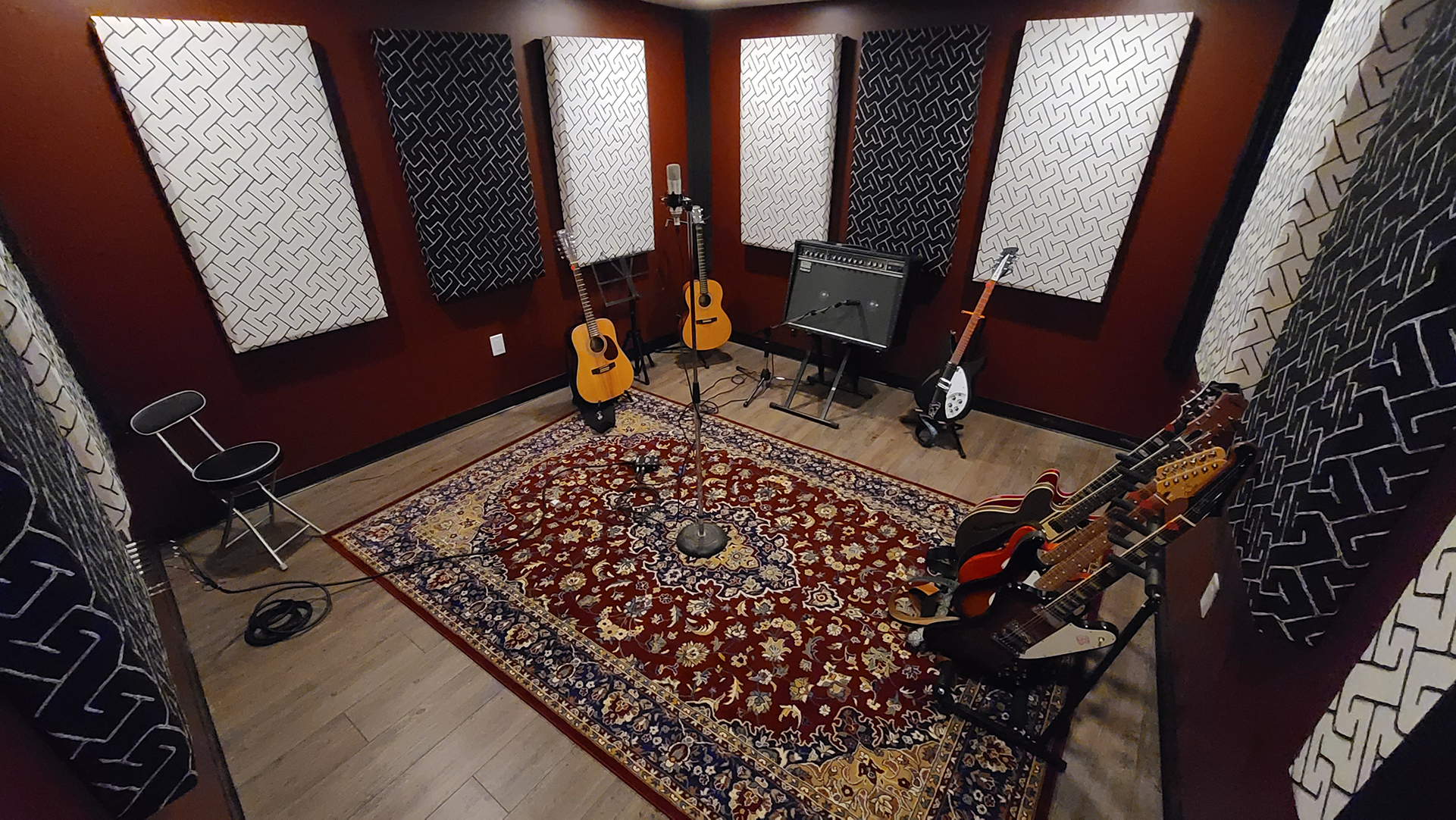





Use whatever floor type suits your usage. Carpet should have a carpet pad under the carpet. Hardwood floors should have…
Hello. This article mentions choosing a sound absorbing carpet and a pad. Could you please give examples of products? I…
All noise must be measured for frequency and amplitude. The barrier design chosen to fix the noise issue is dependent…
Hi, Really interesting article. I've just had a prototype water filtration and softening (using filters, not salt) system installed in…